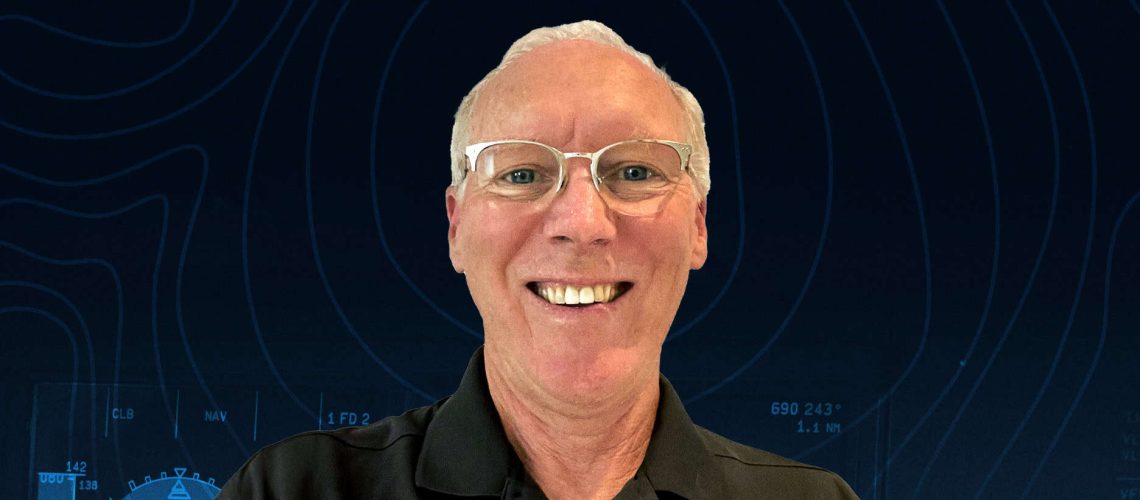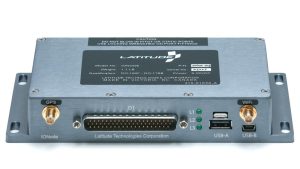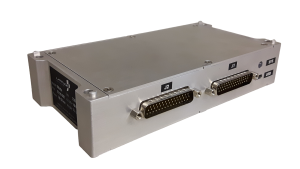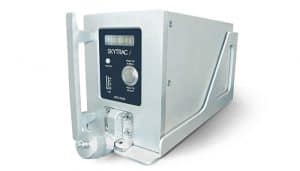Continuing our Subject Matter Expert Series, we met with David Thomas, SKYTRAC’s subject matter expert in General Aviation. David specializes in flight tracking and satellite communication systems.
David has spent over 50 years in the aviation industry, with the unique experience of being both an Aircraft Maintenance Engineer and commercial fixed-wing and rotorcraft pilot. Drawing from his experience, David shares with us his expertise in avionics, flight tracking, equipping legacy aircraft, and how he thinks the industry will continue to innovate in the future.
What is your educational background?
I obtained both my commercial fixed-wing and helicopter pilot’s license in 1978, and the following year, I became a licensed Aircraft Maintenance Engineer. In 1980, I graduated from Simon Fraser University with a Bachelor of Commerce.

Can you share with me what drew you to aviation, and how did you get involved in the industry?
My father’s career as a helicopter Aircraft Maintenance Engineer with the Royal Canadian Air Force in the 1950s ignited my lifelong passion for helicopters and aviation. Growing up around these machines, I was drawn to them, a fascination that has only grown stronger over the years.
I have been involved in aviation for over 50 years. When I was 13, I was out in the bush and working with my father, learning to maintain helicopters. I spent the following 30 years in aircraft operations, maintaining, flying, and owning various aircraft; supporting everything from logging and oil exploration to heli-skiing, movie production, and firefighting.
Having personally experienced field operations and the challenges our customers face with technical and financial constraints, I have the unique ability to see life from their side.
What is your subject matter expertise?
My expertise is general aviation knowledge, stemming from my over fifty-year career in several different aviation segments.
My career in the aviation industry has been a unique blend of roles. I worked as an AME for Nahanni Helicopters, and as both an AME and pilot for Liftair International, Okanagan Helicopters, Osimas Helicopters, Transwest Helicopters, Buffalo Airways, and Nationwide Helicopters, which my father and I founded in 1982.
In 2000, I joined NAT and later Chelton Flight Systems in Kelowna, selling and marketing everything from aircraft audio to synthetic vision EFIS. In 2008, I joined SKYTRAC’s Latitude Technologies, selling flight tracking, satellite communication systems, and Flight Data Monitoring systems.
This role, coupled with my background in Aircraft Maintenance Engineering and experience in flying both rotorcraft and fixed-wing aircraft, has equipped me with a comprehensive understanding of the industry. It enables me to effectively serve our customers by providing innovative solutions and creative insights for a wide range of aircraft types and models.
Photos of David over the years. (Photos by David Thomas)
What excites you about working in aviation?
The merge of newer, more advanced technology with older airframes is something that I am very passionate about.
Some examples of the technology I get excited about implementing on aircraft are flight tracking systems, communications systems, and data management platforms. These systems enhance aircraft safety, navigation, efficiency, and emergency response, all leading to an improved experience for crew and passengers.
The future holds many more technological improvements and innovations, and I’m excited to continue helping our customers adapt and improve their flight operations.
What is aviation’s value to other industries, people, and society?
Aviation, as a whole, provides incredible value to society through global transportation, job creation, medical and disaster response, and so much more. Regarding the capabilities that SKYTRAC offers, flight tracking is one of the highest-value services we provide to the aviation industry and, therefore, to people and society.
When I flew in the 1970s and 80s, nobody knew my aircraft location or where I was headed. Looking back on this, the absence of location tracking presented significant safety concerns.
Flight tracking technology began to develop in the late 1980s, with SKYTRAC as one of the leading providers. Since then, it has become a crucial component of modern aviation.
I have always said that flight tracking gives pilots, ground crew, passengers, and loved ones of those on board peace of mind. Because aircraft positions are being tracked, aircraft in distress can be located much quicker, and the risk of events such as collisions is reduced.
Flight tracking contributes hugely to making the aviation industry, and therefore, people, safer.
What challenges is this segment confronted with today or has been in the past?
Much of my work involves connecting with owners and operators of older, legacy aircraft looking to install new devices or equip the aircraft with upgraded technology and features.
One of the challenges is determining what the aircraft can handle in terms of capabilities. Because of all the advancements in aviation and the range of products and services that SKYTRAC offers, it’s natural for legacy aircraft owners to want to install the “latest and greatest” on their aircraft.
However, legacy aircraft have limitations when considering technological advancements, and my experience with these aircraft helps provide customers with the solutions they need.
How does SKYTRAC help tackle those challenges?
Our team has extensive experience working with all kinds of aircraft, so we can provide customers with insight into the best solutions for their model.
We’re also constantly improving our products for our customers. This includes developing better interfaces, improving our flight data monitoring systems, and expanding our data analytics capabilities.
One of the key solutions we offer our customers is data management. Because of our systems, we enable legacy aircraft to capture, manage, and move more flight data, allowing them to fly more efficiently and safely. Our products and services have impacted thousands of older aircraft, and the number will only increase as we continue to innovate and develop our offerings.
Enable a fully-automated solution for data gathering, distribution, and real-time flight alerting.
Built to enable engine condition trend monitoring (ECTM), flight data monitoring (FDM), and fuel management programs for your aircraft.
Enable multiple capabilities with the cost effective narrowband Satcom and onboard server solution.
What capabilities are in demand in this segment?
One capability that I am very passionate about seeing utilized more is engine trend monitoring. Our IONode, ENode, and ISAT-200 products measure engine parameters, detect early signs of deterioration and accelerated wear, and assess and correct issues before escalated costs, failures, or groundings.
This capability improves an aircraft’s safety measures, extends the life of engine components, and can help identify performance inefficiencies, such as turbine wheel wear/damage through gas path analysis.
Another in-demand capability is a more efficient and cost-effective data communications system. Products like the ISAT-200A-07 and SDL-350 offer reliable satellite communications and connectivity for all types of aircraft, improving flight safety and operational efficiency.
How do you keep connected on this segment’s latest trends and regulations?
I stay informed about the latest industry news by regularly communicating with customers, attending aviation tradeshows, and reading industry publications. My passion for aviation has only increased after over 50 years in the industry. I love learning about technological advancements and how the industry is growing and changing.
What future trends do you see that will impact general aviation?
Growth will come with more applications alongside the advent of more economic data availability for general aviation and the aviation industry as a whole.
We’re already seeing this data availability increase in law enforcement with the ability to stream real-time video, the air medical market with patient data telemetry, forest fire fighting with timely fire behavior data communication and analytics, and in general aviation with timelier and cost-effective flight data communication for flight operations efficiency.
These capabilities bring greater safety for crew and passengers, better communication between pilots and ground crew, improved response time to system malfunctions and issues, and, of course, vastly improved aircraft operation economics.
Get in Touch
Speak with a connectivity expert today. We are eager to discuss your business needs.




